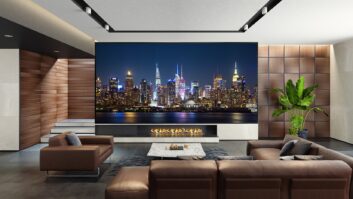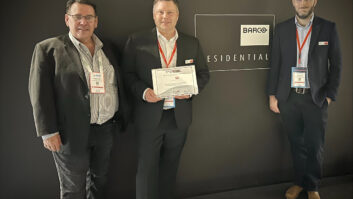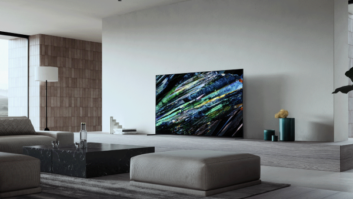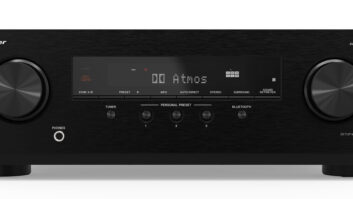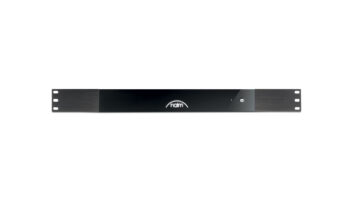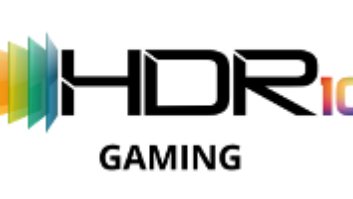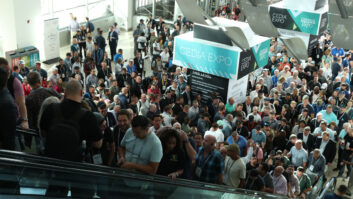If you are performing custom installations and you don’t offer video calibration, not only are you missing out on a golden revenue generation opportunity, but your client for all intents and purposes might as well have purchased his or her display device down at Costco or Best Buy. And now that even Best Buy has thrown their hat in the ring, we need to be even more diligent about “accessory sales.”
A valuable service such as video calibration is what sets those of us in the CEDIA channel apart from the mass retailers. Calibration helps us bring home our vital “value-add” message to our clients. Our business model really comes down to quality and service. My motto is, “If you’re selling, sell quality.”
Sounds obvious, but we must not forget that selling quality video means more than selling a premium, high-quality brand of display. Selling a great projector or TV without calibrating it is tantamount to installing a swimming pool but not connecting it to a water supply, or installing a professional quality range without hooking it up to a gas line.
Everything ages, but not everything gets finer with age. Video displays are a good example. Light-based displays, for example, will change over time. You should calibrate such a product at the time of install, and again at the end of the lamp life when a new lamp goes in. Gradual picture degradation will occur; LCDs generally a year or two after normal use, a plasma annually.
Annual Calibrations
Remember that you are not in this to sell TVs; you are building customers for life. Calibration helps you do this. Annual calibrations are also fine upselling opportunities; you’ll have exciting new products, services, and upgrades to tell the client about on your return visits.
Most consumers don’t realize that factory presets are often geared to look good on very bright sales floors–not in living rooms or theater rooms. TV adjustment menus seem to get more complicated and intensive every year, too. Very few consumers are capable of fine-tuning a set’s picture as well as we professionals can. Don’t trust them to do so, and don’t let them think they’re capable, either. But then again, I know I am preaching to the choir.
The value of Imaging Science Foundation (ISF) calibration tools to our industry is immeasurable. ISF enables certified technicians to deliver professional cinematic standards to consumer televisions. Runco has long used the slogan, “Bring Hollywood Home.” ISF helps us do just that.
ISFccc Mode
I encourage you to sell and install displays with ISFccc mode built in. Runco was the first projector manufacturer to implement ISFccc mode on its projectors and flat panels, and it has proven incredibly beneficial to me in terms of “idiot-proofing” my calibrations. ISFccc is a safeguard against curious customers who may think they “know how to do it better.” It’s a programmed setting that ensures the viewer will get the best picture every time.
If you are not ISF-certified, I encourage you to become so. Not only does it give you the skills to carry out a proper calibration, but it’s also something you can effectively market and sell as a certified service to your clients.
It’s great that Best Buy is acknowledging and putting the word out to the masses that system calibration is important. It validates what we’ve been doing all of these years. But it’s also a challenge that should push us to greater heights. We custom installation professionals and ISF calibrators need to be the best.
Of course, you can perform a rudimentary calibration using the minimum settings included with the purchase of most displays. It’ll take you about 30 minutes to align presets, color temperatures, and everything else this way. But you can also offer and deliver full ISF calibration as a service, and the installation will benefit from the wider variety of measurement instruments and settings available.
Let me finish with some calibration tips and techniques from my experience:
Evaluate the whole system, not only inputs. A proper video display calibration must consider every component, signal patch, and source, as well as the actual viewing environment and a customer’s viewing habits.
Hire an ISF pro for your team or become one yourself. But also remember that video calibration quality goes beyond a one-time class. Tried-and-true methodology and practice will serve you right. Many manufacturers offer ISF training within their training courses, such as at Runco Academy and Vidikron University.
Calibration instruments are not intelligent, so don’t assume they are. Instruments cannot tell, for example, if light is coming from the display, from a nearby window, or from light bulbs. Shield your instruments to get the best picture. Bring photographer drape, adjust the shades, and block as much ambient light as possible–or wait until it is dark to perform the calibration.
Show the client the display at its best, and also at its worst. Show high-definition and standard definition content. Although HD content looks amazing, very few people are going to be watching only HD. SD content will invariably be shown in the home. Spend more time on SD, and you will have a well-informed customer who isn’t forever whining about his or her purchase. Calibrate the client’s expectations, in other words.
Be aware of the environment. Correctly assess the products you carry to maximize their performance in various room types and applications. LCDs, plasmas, and projectors each offer unique technology solutions geared to certain situations.
Be careful not to fall in love with your instruments. Trust your eyes. If your eyes say “green” and the instrument does not, believe your eyes.
Properly communicate just what you are doing for this customer. You don’t have to show them how, but explain what and why.
Pat Bradley is a video calibration consultant and industry veteran. He is also the instructor of Runco Academy’s Master Class-Mastering the Art of Home Cinema, accredited training program.
